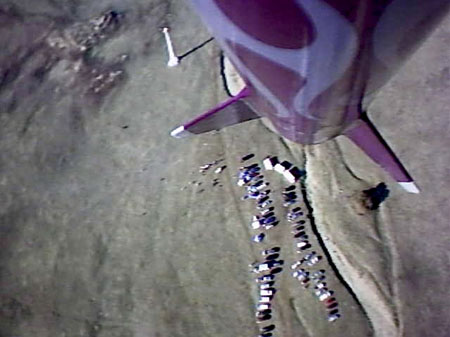 |
| Photograph by Steve Jurvetson (Flickr) - License CC by 2.0 |
In smaller diameter rockets the space available for a camera is very restricted. However, cameras are sometimes mounted inside the cylindrical body pointing into a mirror which can be opened beneath a protective flap in the side of the rocket. This technique has the advantage of producing downward-looking images incorporating the side and fins of the rocket. Pictures taken in this manner have the advantage of a foreground and consequent perspective.
Ideally, the mirror needs to be as large as possible and angled to show part of the body of the rocket, and the fins, but not too much metalwork. The photographs ideally show the receding ground, the exhaust plume from the rocket and just enough of the rocket to indicate where the camera is positioned. The photograph opposite was taken as the rocket floated back to earth on a parachute.
The simplest camera trigger mechanisms consist of an electronic timer that simply releases the shutter on a point-and-shoot camera every few seconds. The shutter release sequence can be initiated by controlling the electronic timer with an acceleration switch which closes during the rocket's powered ascent. Once the rocket fuel is exhausted, most rockets and payloads are returned to earth on parachutes. Some designs release the camera in to a downward-looking orientation so that images can be captured during the descent phase of the flight.






